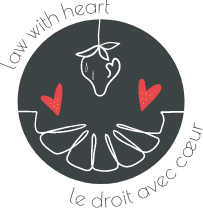Convocation
Stoles
In 2019, we launched a community beading circle at our Faculty of Law.
I knew that these first efforts would not
represent truly ethical or entirely safe spaces
one hundred percent of the time.
I did hope, however, to create a safe enough space, one in which the knowledge historically held by Indigenous women would be centred. I also considered the beadwork as an opportunity to create safe spaces beyond the law school, specifically at convocation – one of the most heavily regulated, protocol-governed, ceremonial events of university life. Knowing, anecdotally, that many Indigenous graduates choose not to attend their convocations, but also knowing from personal experience the sense of closure and release convocation can bring after struggling to complete academic credentials, the work of beading circle was centred on the creation of stoles customized for each graduate.
READ MORE ➔
By the time a beaded stole is gifted to a Learner at convocation, it has passed through a dozen or more sets of hands, who have all engaged in active work to honour the journey of the beadwork recipient. We call those who do the work members of the Beauty of Beaders, so named by Dr. Tracey Lindberg one cold Thursday morning in the winter of 2019. A murder of crows, a flock of sheep, a celebration of polar bears, a Beauty of Beaders.
The first four weekly beading circles attracted a handful of Learners and our first task, while practicing the basic single needle backstitch technique, was to collectively develop a symbol for our community. To engage more Learners, we turned to online platforms and we reached out to our 2019 graduates individually to elicit their input. The result of this collaborative process was Àbimì, and it was determined that she should appear on the left-side of all stoles, over the heart of the graduates.
The right-hand side of the stoles is reserved for the individual, their families, and their communities outside of the law school. Years before convocation, future Beadees are asked to reflect on what images, colours, and ideas best reflect them as law Learners, Indigenous peoples, and future lawyers. They are asked to engage with their families and communities to complete a stole survey, a research tool so rigorous that it contains a disclaimer that the Beauty of Beaders reserves the right to completely disregard all responses if inspiration strikes us.
Stole surveys are then forwarded to researchers who pick up the threads of curiosity and dive deep into readings on images, laws, colours, symbols, communities. They propose ideas for the pattern makers, who get on with the work of imagining what the end product might look like. Pattern makers come in all levels of artistic ability. Some source images online, some trace existing images. Some freehand designs using graphite pencils on Japanese pattern paper sourced at a local fabric studio. Others literally decoupage and glue on printer paper.
In the end, patterns are often modified by the beaders as they experiment and test the limits of beads. The beaders sometimes bead on stabilized felt that supports beadwork, which is added to stoles with darning needles and calm hands. Other times, they bead directly on rough-edge stoles we cut from bolts of melton tradecloth.
Beading can take days, or weeks, or months.
Completed beadwork is checked and sometimes repaired or reinforced by members of the Beauty before being handed off to volunteer seamstresses for backing, edging, and finishing. Usually this is done by machine, but when the beading gets away from us and we do not leave adequate seam allowances, they sew by hand. They don’t love us when this occurs, but there is a common understanding that the beaders follow the beads, and not the other way around.
When finished stoles are returned to the Faculty, they are held safe until stoles for the entire cohort are complete. They are displayed in public for a morning in a space created to allow people to come and share in the process, ask questions, and get to know our graduates before convocation day. We gather, we visit, we touch the beadwork, and we eat together - this before engaging in ceremony where we cleanse the stoles and prepare to gift them in a good way to Beadees.
At convocation, before a gathering of more than 4000 graduates, family members, and community, information about the stoles is displayed on the big screens, bringing the rest of our community into the process.
In a parallel but absolutely separate and distinct initiative, the Beauty of Beaders also beads stoles for leadership within the Faculty. Where stoles for Learners and graduates are conceived to honour their journeys through law school, stoles for leadership are designed to highlight the responsibilities of those holding positions of authority and power vis-à-vis reconciliation and making space for Indigenous ways of knowing and pedagogies within the law school. Stole surveys are completed, patterns are made, stoles are sewn - all the steps are the same, but with a different purpose, objective, meaning. Academics and leadership who choose to accept stoles are acknowledging their responsibilities, and we encourage them to reflect on how they can and will engage in reciprocal relationships with Indigenous peoples and communities as they discharge their duties within the Faculty.










